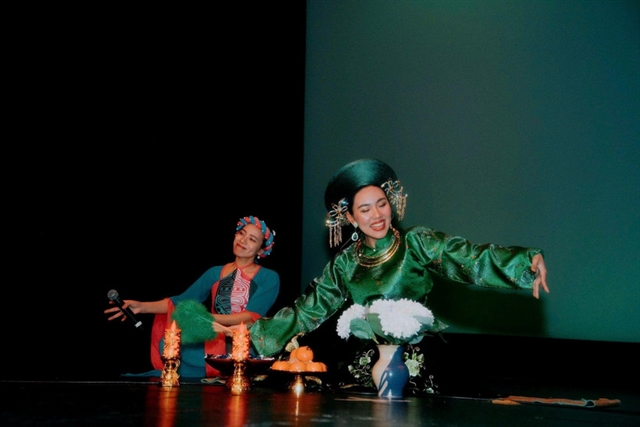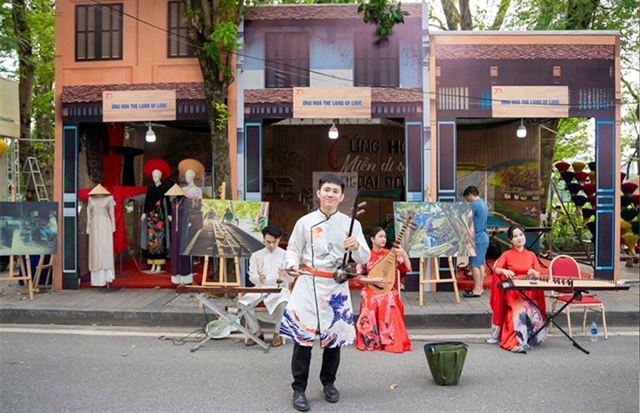 Economy
Economy

Giang Minh Tuấn, 29, looked nervous in his navy blue shirt and beige trousers sitting in front of his laptop computer in a corner of his apartment in Hà Nội. He was in the middle of an interview for a new job but due to social distancing restrictions, he had to do his interview online.

|
| While recruitment activities are stable during the pandemic, virtual interviews are becoming more popular. — Photo vitop.vn |
HÀ NỘI —Giang Minh Tuấn, 29, looked nervous in his navy blue shirt and beige trousers sitting in front of his laptop computer in a corner of his apartment in Hà Nội. He was in the middle of an interview for a new job but due to social distancing restrictions, he had to do his interview online.
Tuấn was successful and started working from home for an education company.
Recruitment activities have remained stable compared to last year, despite the complicated wave of the pandemic, and virtual interviews are experiencing a renaissance.
"Learning from last year's experience, businesses are no longer passively responding to the pandemic. With more business continuity plans in hand, they have been able to minimise the COVID-19 disruptions to their operations, including recruitment," Nguyễn Thu Hà, Director of Human Resources at Adecco Việt Nam said.
"Most businesses switched to virtual hiring practices after the Government issued decrees on the prevention of COVID-19," she added.
Data from Adecco showed positive signs in the number of new jobs being created with an increase of up to 60 per cent in Q2, 2021 for some sectors. Food and beverage, transportation, and tourism sectors, however, are still struggling.
Due to the rapid digital adoption driven by COVID-19, technology-related sectors such as e-commerce and Fin-tech had a high hiring demand. The manufacturing industry was also actively hiring.
“Companies now prefer experienced and highly specialised candidates as they can take on the job promptly, instead of recruiting and training entry-level roles. They are looking for key positions that can help sustain their businesses in the current ever-changing market,” Hà said.
According to experts, the major challenge in recruitment was the switch from traditional to virtual interviews. These are often not enough for candidates to effectively evaluate the work culture.
They said it was also more challenging for employers to observe body language and how candidates react to the workplace.
The engagement level in virtual onboarding is also a concern. Without a human connection and face-to-face interactions, it is hard for new hires to set the right tone for work and get a feel for what it is like to work in the company.
As not everyone is comfortable being on camera, some of them might feel awkward, leading to a lack of confidence and this may be misjudged by interviewers.
However, in the context of social distancing, this new type of interview has become a must.
Andree Mangels, General Director, Adecco Vietnam, also emphasised the importance of a social media presence, saying: “It's not just the top talent that needs to sell themselves. Businesses also need to find ways to attract top talent.
"By regularly sharing about life at the company, your hiring stages, values, and working culture, you offer candidates a more holistic and realistic idea of your workplace. This forms a bond between you and the candidate even before applying, which helps you stand out, secure the prospective candidates, and it improves the candidate pool.”
Even with no traditional one-on-one interviews, candidates should be as prepared as possible, the experts said.
Recruiters said at the bare minimum candidates needed to pre-check their equipment, software, lighting, and background. They could have a rehearsal interview with a friend to familiarise themselves with the key features and be more relaxed in front of the camera.
Turn off any notifications that can cause distractions before the interview. Maintain eye contact during the interview by looking at the camera, not the screen.
At the end of the interview, keep a professional expression for a few seconds after clicking on the end meeting button. Candidates need to ensure that they are completely disconnected so that they will not show any inappropriate looks by chance. — VNS




